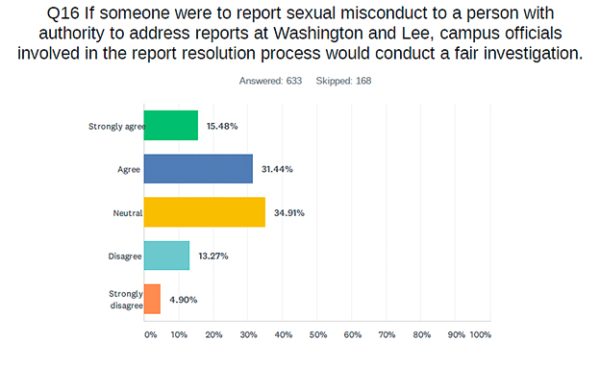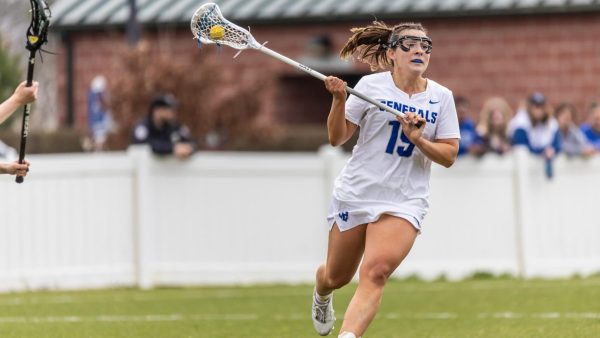Men’s XC has strong competition in ODAC
After its first three meets, the men’s cross country team is confident in its skills and training to be tough runners
October 10, 2017
Currently ranked 29th in Division III, the Washington and Lee men’s cross country team has high hopes for this season.
In their first three meets of the year, the Generals did their utmost to prove they can be competitive in both the ODAC and beyond.
On Saturday, the Generals came in third at the Shenandoah Hornet Harrier meet. Before this weekend, the team came in fourth at Virginia Tech’s Hokie Invitational on Sept. 1 and then won the James Madison Invitational on Sept. 9. Team members said these early successes have given the team a great deal of confidence as it heads into the rest of the season.
Preseason for cross country started on Aug. 19, and the Generals haven’t looked back since. Coach Brandon Spalding said he is extremely proud of how his team has performed at the start of this season, especially after losing three key seniors last year.
After finishing 27th at Nationals last season, the Generals opened up the preseason at 24th. This was the highest rank in program history.
“We definitely had some gaps to fill this year, but a key to our early season success is our next tier of guys,” Spalding said. “Alex Dolwick, ’19, Patrick Hunter, ’19, and Austin Kinne, ’20, really improved and stepped up to try to fill those roles. I’ve been really impressed with first-years Freddy Marx and Daniel Cope as well.”
Spalding hopes this team can continue its early success.
“We would like to be able to win our third straight ODAC Championship,” he said. “Our region is probably more competitive than it’s ever been. Last year, our region not only qualified for the two automatic bids to Nationals but also had two at-large bids. Our ultimate goal is to get back to the national championship.”
A return to Nationals would constitute the first time in university history that a cross country team has competed in back-to-
back national meets.
In order to give the team its best chance at chasing history, members said they must stay focused on reaching their peak form and speed by October and November.
“Probably the most important thing to our training is making sure that we’re handling ourselves at the right blocks of training and really trusting our process that, at certain points of the year, maybe we’re not as fast as we would like to be, but we understand that three weeks down if we follow the process we will reach that level,” Spalding said.
In order to reach the pinnacle of performance, Spalding noted the team must balance high intensity training with recovery. Depending on the individual runner, team members can run anywhere from 55-60 miles in a week at the lower end of the spectrum, with the top-level competitors running 80-85 miles in a week.
According to Spalding, an average week for the team goes something like this: “We usually have high intensity days one or two days a week and the other days are more of our recovery mileage. We also want to make sure that we’re taking care of our mobility, stability and strength training during the week. Our pre- and post-practice include drills, stretches, ice baths, nutrition and sleep. One of the biggest things is just getting rest during the week.”
This team also has the tough task of balancing its workload on the course with its workload in the classroom. Members noted, though, that with a cumulative average team GPA of 3.58, they believe they’re handling the challenge well.
But while these successes seem to be the standard of today’s cross country team, this hasn’t always been the case. According to Spalding, the program has turned around significantly since 2012, something the coach attributes to his players believing more in themselves.
“It all started [with the] belief that we could get to the national championship. From 2012 to 2016, we were the most improved team in the country. Of the 32 teams at last year’s national championships, no team, aside from us, finished below 12th in their region,” Spalding said. “Knowing that we went from 15th in the Region to 27th in the country in five years, I think it speaks a lot of those guys that were sophomores and first-years in the program when I first started in 2013 and what kind of belief they had in the program.”












